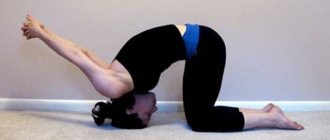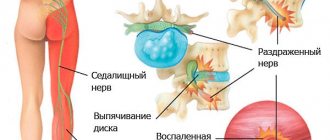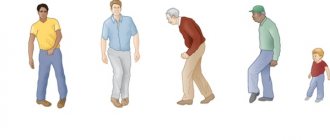Regular moderate physical activity is one of the factors that allows you to maintain good health for a long time. Not only have many articles been written about their benefits, thousands of hours of video footage have been filmed, and hundreds of books and manuals have been published. The topic of multiple sclerosis and physical education is no exception.
Like specialists - neurologists, physiotherapists, exercise therapy instructors - patients themselves claim that moderate, well-chosen physical activity is necessary for this disease. However, of course, physical activity for people living with multiple sclerosis and the activity acceptable for healthy people are different.
Therefore, when trying to make physical activity and gymnastics part of your daily life, it is worth paying attention to some of the features that multiple sclerosis brings.
First of all, consult with your doctor, who will give you advice on what kind of exercise is recommended for you, which exercises have the potential to be beneficial given your symptoms, and which ones will not.
Tips for therapeutic exercises
Learn to listen to your body and immediately respond to the signals it sends you. If you perform any set of exercises and your symptoms do not worsen or you do not experience excessive fatigue, then most likely these exercises are suitable for you.
There is a misconception that physical education classes and gymnastics are about overcoming. If, in order to restore your strength after a load, you need more time than it took to actually perform the exercises, then with a high degree of probability it can be argued that these exercises and such a load are contraindicated for you. Learn to stop before your body tells you that you have reached your limit. Choose a set of exercises that you will enjoy doing.
Before you start regularly performing any set of exercises, remember that it is important to gradually increase the load. To start, choose a couple of exercises and do them once a day. While performing the exercises, do not forget to monitor your breathing. Doing exercises while holding your breath is definitely not beneficial.
After a few days, if your health has not worsened, you can begin a longer program: increase the number of repetitions of familiar exercises or add a new one. Make sure that increasing the load does not lead to increased fatigue. Do not forget that even a minor load requires subsequent rest.
What's happened?
Multiple sclerosis is a neurological disease that has a chronic form. It is recognized by its characteristic symptoms:
- constant feeling of tiredness;
- poor memorization and reproduction of information;
- causeless occurrence of depression;
- deterioration of health: dizziness, cramps;
- the appearance of a sore throat when trying to swallow;
- urinary incontinence.
If such problems arise, you should immediately contact a neurologist for a diagnostic examination and selection of complex therapy. An integral component of it is physical therapy for multiple sclerosis.
The most common cause of multiple sclerosis is a weakened nervous system. Each cell of the body cannot resist infection, which is why neurological cells are destroyed.
A set of exercises recommended for multiple sclerosis
The set of exercises that will be presented on the site was developed by British physiotherapists Liz Betts and Wendy Hendry, who specialize in helping patients with multiple sclerosis. Full information about this complex is available on the portal https://www.mstrust.org.uk - an information resource that provides significant information support to patients with multiple sclerosis in the UK.
All exercises are divided into two categories: the starting position in which the exercise is performed or the problems that patients with multiple sclerosis face and in solving which this or that exercise may be useful. You can create an individual program from them that suits your capabilities and needs. So:
Exercises that are performed in the initial (IP) lying position
- IP: lying on your back, legs bent at the knees, feet touching the floor and separated at a distance of about 30 cm. Alternately pull the knee of one leg towards your chest, helping yourself with both hands, keeping the other leg extended. Repeat the exercise 3-5 times for each leg.
- IP: lying on your back, legs bent at the knees, feet touching the floor and separated at a distance of about 30 cm. Tilt your knees to the right within the available range of motion, return to IP. Bend your knees to the left within the available range of motion, return to IP. If possible, do not lift your feet, pelvis and shoulders off the bed or floor. Repeat the exercise 3-5 times.
- IP: lying on your back, legs bent at the knees, shins perpendicular to the floor, feet resting on the bed or floor and separated at a distance of about 30 cm. Tighten your buttocks and lift them off the floor. Hold the accepted position for a few seconds. Slowly lower your pelvis to the floor. Try to avoid trembling legs. Repeat the exercise 3-5 times.
The following exercises can be performed either lying or sitting
- IP: lying or sitting on a hard surface. Raise your outstretched arms one by one, trying not to bend them at the elbow, as much as possible without causing pain. Then slowly lower your raised hand. Repeat the exercise 3-5 times.
- IP: lying or sitting on a hard surface. Holding an umbrella or rolling pin in your hands, slowly raise both arms up - inhale, then slowly lower them - exhale. Raising your arms should not be accompanied by pain. Repeat the exercise 3-5 times.
- IP: lying or sitting on a hard surface. With your arm bent at the elbow or leaning on the armrest, alternately touch your fingertips to your thumb. Lower your hand and repeat the exercise with the other hand. Repeat the exercise 3-5 times.
Exercises that are performed in the initial (IP) sitting position
- IP: sitting on a hard surface. Sit up straight, relax and lower your shoulders, keep your head straight, look straight ahead. Move a little away from the back of your chair. Lean back confidently and quickly enough, touch your back (in the area of the thoracic spine) to the back of the chair, without tilting your head. Return to the starting position. When performing the exercise, you should feel the load on your hips. Repeat the exercise 3-5 times.
- IP: sitting on a hard surface. When you sit on a hard surface, you can feel the two bones that you are leaning on. In this exercise, transfer your body weight from one bone to another, while maintaining an upright torso position. Repeat the exercise 3-5 times.
- IP: sitting on the sofa or bed. Alternately lean to the side, while your hand “slides” (does not lean!) along the edge of the bed. Try to reach out with your hand. Return to the starting position. Repeat the exercise 3-5 times.
- IP: sitting at the table. Place your hands on rags or a towel. Imitating “wiping dust,” stretch forward, stretching the muscles of your arms and back. Return to the starting position. Repeat the exercise 3-5 times.
- IP: sitting at the table. Place your forearms on the table. Take an umbrella or rolling pin. Use your wrists to lift and lower the rolling pin or umbrella. Make sure that your elbows do not leave the table. Repeat the exercise 3-5 times.
- IP: sitting at the table. Take a rolling pin or umbrella in your hand and hold it perpendicular to the table. Slowly rotate your wrist toward the surface of the table so that the rolling pin touches the surface. Return your hand to the starting position and then try to perform the exercise in the other direction. Repeat the exercise 3-5 times
- IP: sitting at the table. Take a rolling pin or umbrella in your hand and hold it in front of you with outstretched arms. Use your hands to move up and down the object. Don't bend your elbows. Repeat the exercise 3-5 times
- IP: sitting on a hard surface. Place your hands on your knees. Leaning on them, slowly take a standing position. Then count to three and slowly lower yourself into the chair. Over time, try doing this exercise without using your hands.
So, above are exercises that can be performed from a starting position while sitting or lying down.
The next publication will provide exercises that can be performed from a standing position, and will also provide recommendations from British experts on the formation of individual sets of exercises that will take into account the symptoms and problems that may arise in patients with multiple sclerosis.
Advantages
Exercise for multiple sclerosis is an integral part of treatment. Experienced neurologists have identified several of their advantages:
- General strengthening of the body and increased vitality. Exercises are useful not only for eliminating the disease, but also for preventing its occurrence.
- Reduced feelings of fatigue and overall improvement in well-being.
- Normalizes blood circulation, thereby improving brain activity and memory.
- Strengthening the bladder muscles.
- Strengthening bones and restoring coordination, which undoubtedly leads to the elimination of mobility problems.
As a result of numerous medical studies, it has been proven that regular physical exercise helps improve the physiological well-being of a person with multiple sclerosis. Moreover, you can perform both complex exercises with a trainer and a simple exercise therapy program for multiple sclerosis at home.
Contraindications to training
A person himself, like no one else, can assess his own well-being: whether he can bear the load, or whether it will make him worse. Obvious contraindications to exercise therapy for MS are viral and cold illnesses, elevated body temperature, severe dizziness or weakness.
It is imperative to consult a neurologist before performing exercises, especially if the patient has other concomitant chronic diseases. The specialist will be able to give an objective assessment of the patient’s health.
Features of the action of body temperature
Experienced neurologists have proven that approximately 60-80% of patients with multiple sclerosis experience an increase in body temperature. This is due to performing physical activities that are unusual for the body. It is worth noting that, basically, this only happens in the early stages of training and gradually goes away.
Multiple sclerosis is one of the most common neurological diseases, which is quite difficult to treat. Only complex therapy, one of the components of which is physical therapy, can alleviate the patient’s well-being.
Patient adaptation
To adapt the patient, specialists use technical means of rehabilitation:
- cane;
- walkers;
- rollers;
- verticalizers;
- wheelchair;
- a multifunctional bed and other devices selected depending on the stage of the disease.
Much attention is paid to training relatives to operate equipment, use alternative communication means, ergonomically move the patient, care for bedsores, and adherence to the orthopedic regimen.
Exercises to strengthen the body
Strength training is essential for every person with multiple sclerosis. They allow you to achieve:
- Body strengthening;
- Increased muscle mass;
- In addition, they can instantly overcome fatigue and improve self-esteem.
Scientists have proven that strength training causes the body to produce happiness hormones, which means that a person who exercises regularly will be less susceptible to stress and depression.
Strength training and exercises for MS include the use of dumbbells and cuffs that are placed on the legs. It is worth noting that this is quite a large load for a person, so it is recommended to exercise only in a gym under the supervision of a qualified trainer or medical professional.
In the first stages of strength training, it is recommended to use a minimal load and perform several approaches. The main goal is to achieve mild muscle fatigue. Then, gradually the load can be increased, but it is imperative to take a short rest between approaches to restore the functioning of the respiratory system.










